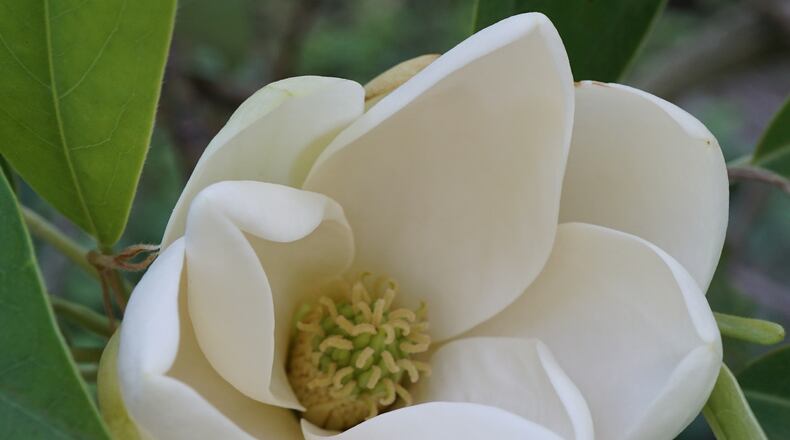For more than 100 years, the Georgia state flower has been the Cherokee Rose. But an effort is underway to remove this designation and offer the Sweetbay Magnolia as a replacement.
The Georgia Native Plant Society supports a plan by Rep. Deborah Silcox (R-Sandy Springs) and Sen. Rick Williams (R- Milledgeville) to introduce legislation next year calling for the change.
GNPS has said the Cherokee Rose is an invasive species which is non-native to Georgia. Supporters of the change have further said the Cherokee Rose is not an important part of Cherokee culture as it was believed to be when the resolution was passed by the Georgia Assembly in 1916.
“Georgia is one of the most biodiverse regions in the world with so many beautiful native flowers,” Silcox said earlier this month. “We deserve a state flower from Georgia!”
Silcox seems to be speaking with a sense of urgency even though the error which led to the Cherokee Rose becoming Georgia’s state flower is not new information.
In 1960, writing for the Georgia Review, Paul Tabor, an agricultural scientist from the University of Georgia, said: “According to the best available botanical knowledge, the premise of the resolution is in error. The Cherokee Rose did not have its origin in North Georgia; it is not Indigenous to the soil; it does not grow with real luxuriance in any county of the state today.”
He also suggested this revelation would not have much impact on the Cherokee Rose’s status as the Georgia state flower. “One can speculate on the fate of the resolution if legal action were brought against it,” he wrote. “Sentiment for the rose renders such action highly improbable.”
With two Georgia legislators planning to test Tabor’s speculations, sentiment for the Cherokee Rose seems to have waned. I wonder then who have been the holders of this sentiment because it doesn’t seem to be the Cherokee people.
Tony Harris, a member of the GNPS and vice president of the Georgia Cherokee Community Alliance, said the Cherokee Rose does not hold any significance to Cherokee culture.
“Cherokee citizens will not have an issue with removing the Cherokee Rose’s designation as the state flower,” Harris wrote in a 2023 letter to GNPS. “Not only am I passionate about the preservation of Cherokee plants but also I am passionate about educating people about the myths surrounding Cherokee culture.”
The story of the Cherokee Rose may soon become a cautionary tale, a lesson on what happens when myths and inaccuracies pass for historical truths. Since we recently celebrated Thanksgiving, I couldn’t help but think of the myths surrounding that holiday. Several years ago, Teen Vogue featured six Native American girls telling us what Thanksgiving represents to their families. I loved seeing a new generation reclaiming the narrative of their ancestors, followed by a symbolic upending of a tradition that is purely an American creation.
The Cherokee Rose has a long and interesting history in Georgia but its origins are in China. The flower, noted for its white petals and gold center, is believed to have first arrived in Savannah around the time of the American Revolution.
Some historians said the flower was named Cherokee Rose in recognition of the support native people gave to America and Britain in wars against the French. But when we talked by phone, Harris quickly debunked that claim.
According to another legend, the Cherokee Rose was a sign Cherokee elders gave to weeping women during the forcible removal of native people from their land. As the women walked along the Trail of Tears, a Cherokee Rose bloomed in each place that a tear fell, a symbol of the strength and determination they would need to carry on in a new land.
“There are a lot of stories and myths out there and I refer to it as being Hollywoodized,” said Harris, a Cherokee elder and a specialist in ethnobotany. “A fable sounds good when you are telling it to children and you want to keep their attention.”
In reality, the Cherokee Rose was an ornamental shrub. In 1828, politician, banker and botanist Stephen Elliott also hailed its practical uses after an enslaved man on his property used it to create a living fence that kept livestock out of the garden. Elliott agreed that this was a superior plant to use as hedges for its strength, durability, quick growth and beauty.
For decades, the Cherokee Rose was used as fencing at millionaire estates in lower Georgia but, by the 1950s, it was deemed an invasive plant that needed to be controlled.
Harris said the Sweetbay Magnolia was a fine choice for the new state flower. It grows in the garden he started years ago to teach Cherokee culture and history through the relationship to the earth and plants. The bark of the Sweetbay Magnolia was used by the Cherokee as treatment for gastrointestinal illness or to cure toothaches, he said.
“This (knowledge) is one generation from being lost,” Harris said. “A lot was being passed down orally but when there is an educational garden it maintains its cultural and historical significance.”
Appreciation for native plants is a relatively new movement, said Michael Cowan, a GNPS board member and chair of the advocacy committee. “We want people to recognize the importance of native plants, period,” he said. “We hope this will spur a conversation … hopefully school kids will learn the reasons why the state flower was changed.”
If Silcox and Williams succeed in moving the General Assembly to change the state flower to the Sweetbay Magnolia, the Cherokee Rose could be on its way to obscurity in Georgia. But we should never forget the lessons it has taught us about the recording and retelling of history.
Read more on the Real Life blog (www.ajc.com/opinion/real-life-blog/) and find Nedra on Facebook (www.facebook.com/AJCRealLifeColumn) and X (@nrhoneajc) or email her at nedra.rhone@ajc.com.
About the Author
Keep Reading
The Latest
Featured


